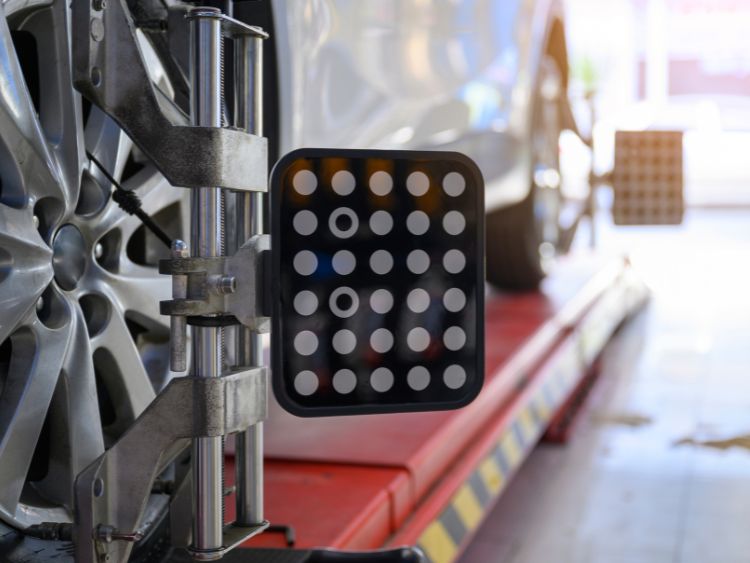Ever felt that annoying vibration in your steering wheel or noticed your car pulling to one side? Chances are, your vehicle’s alignment is off. Wheel alignment might not be the most glamorous aspect of car maintenance, but boy, is it crucial. In this comprehensive guide, we’ll dive into everything you need to know about Kinston wheel alignment. So, buckle up and let’s get started!
What is Wheel Alignment?
Wheel alignment refers to adjusting the angles of the wheels so that they are set to the car manufacturer’s specifications. This adjustment is crucial for proper vehicle handling, even tire wear, and overall safety on the road. Think of it as the auto equivalent of a chiropractor visit – everything needs to be in the right place for smooth operation.
Why Kinston Wheel Alignment Matters
Improved Handling
A properly aligned vehicle ensures that your car handles correctly, making your driving experience smooth and safe. Misalignment can cause your car to pull to one side, making it difficult to steer straight. This not only makes driving tiring but also dangerous.
Increased Tire Longevity
Tires are expensive, and we all want to get the most mileage out of them. Proper alignment ensures even tire wear, which means your tires will last longer. Misaligned wheels cause uneven wear, leading to premature tire replacement. Save yourself some money and the headache of frequent tire changes by keeping your wheels aligned.
Better Fuel Efficiency
Did you know that poor alignment can affect your gas mileage? Misaligned wheels cause your car to work harder, thus consuming more fuel. Keeping your wheels properly aligned can help improve your fuel efficiency, saving you money at the pump.
Signs You Need a Wheel Alignment
Uneven Tire Wear
One of the most obvious signs of misalignment is uneven tire wear. If you notice that the tread on one of your tires is wearing out faster than the others, it’s time to check your alignment.
Car Pulling to One Side
If your car drifts to one side even when you’re driving on a straight road, it’s a clear sign that your wheels are not aligned correctly.
Steering Wheel Vibration
A vibrating steering wheel is not only annoying but also a red flag for alignment issues. If you feel your steering wheel shaking, especially at higher speeds, it’s time to get your alignment checked.
Crooked Steering Wheel
Your steering wheel should be perfectly centered when driving straight. If it’s off-center, even by a small margin, you need to get your alignment adjusted.
The Wheel Alignment Process
Initial Inspection
Before making any adjustments, a technician will perform an initial inspection to assess the current state of your alignment. This includes checking the tire pressure, looking for uneven tire wear, and inspecting suspension components.
Measuring Alignment Angles
Alignment angles are measured using specialized equipment. The three primary angles adjusted during alignment are camber, toe, and caster.
- Camber: The angle of the wheels when viewed from the front of the vehicle. If the top of the wheel is leaning in or out, it’s known as positive or negative camber.
- Toe: The angle at which the tires turn inward or outward when viewed from above. Think of it as looking at your feet and noticing if they point slightly inward or outward.
- Caster: The angle of the steering axis when viewed from the side of the vehicle. It affects the steering stability and cornering.
Making Adjustments
Once the measurements are taken, the technician will make the necessary adjustments to align the wheels according to the manufacturer’s specifications. This might involve adjusting the suspension components to ensure everything is in perfect harmony.
Test Drive
After the adjustments, a test drive is performed to ensure that the vehicle handles correctly and the alignment issues are resolved.
DIY Wheel Alignment: Is It Possible?
While professional wheel alignment is always recommended, some car enthusiasts might wonder if they can do it themselves. Here’s a brief look at what’s involved:
Tools Needed
- Car jack and stands
- Wrenches
- Tape measure
- String or fishing line
- Protractor or angle finder
Steps
- Lift the Car: Use the car jack to lift the front end of your car and secure it with stands.
- Check Toe Alignment: Using the tape measure, measure the distance between the front and back of the front tires. Adjust until the measurements are equal.
- Check Camber: Use the protractor or angle finder to measure the camber angle. Adjust the upper control arm until the wheel is at the correct angle.
- Test Drive: After making adjustments, take your car for a test drive to see if the alignment feels correct.
Risks
DIY alignment can be tricky and risky. If not done correctly, it can lead to improper alignment, causing further damage to your tires and suspension. It’s always best to leave this job to the professionals.
Kinston’s Best Wheel Alignment Services
Living in Kinston and wondering where to get the best wheel alignment services? Here are a few top-rated shops to consider:
1. Kinston Auto Care
A well-known spot in Kinston for reliable wheel alignment services. They use state-of-the-art equipment and have experienced technicians to ensure your car is in top shape.
2. Advanced Tire and Auto Service
Offering comprehensive auto services, including wheel alignment. Their friendly staff and quick service make them a favorite among locals.
3. Smith’s Auto Center
Known for their excellent customer service and attention to detail. Smith’s Auto Center provides high-quality wheel alignment services to keep your vehicle running smoothly.
FAQs About Wheel Alignment
How often should I get a wheel alignment?
It’s generally recommended to get a wheel alignment every 6,000 to 10,000 miles or at least once a year. However, if you notice any signs of misalignment, it’s best to get it checked immediately.
Can wheel alignment affect my brakes?
Yes, poor alignment can affect your brakes. Misaligned wheels can cause uneven braking, leading to potential safety hazards.
How much does a wheel alignment cost in Kinston?
The cost of a wheel alignment in Kinston can vary, but on average, you can expect to pay between $75 and $100. Some shops may offer discounts or packages that include other services.
Do I need an alignment after replacing my tires?
Yes, it’s a good idea to get a wheel alignment after replacing your tires to ensure they wear evenly and your vehicle handles correctly.
What causes wheel misalignment?
Several factors can cause wheel misalignment, including hitting potholes, curbs, or even regular wear and tear on suspension components.
Summary
Wheel alignment is a crucial aspect of vehicle maintenance that ensures your car handles properly, your tires wear evenly, and you enjoy a safe and smooth ride. In Kinston, several reliable auto shops can provide professional wheel alignment services to keep your vehicle in top condition. Remember, regular alignment checks and timely adjustments can save you money in the long run and enhance your driving experience.
Authoritative Links
Here are some authoritative links for more information on wheel alignment and related topics:
- www.carcare.org/wheel-alignment
- www.tirerack.com/content/tirerack/desktop/en/tire_buying_guide/tire_tech/all_about_alignment.html
- www.bridgestonetire.com/learn/maintenance/alignment
- www.firestonecompleteautocare.com/maintenance/alignment
With this comprehensive guide, you’re now equipped with all the knowledge you need about Kinston wheel alignment. Stay safe on the roads and keep your wheels aligned!





